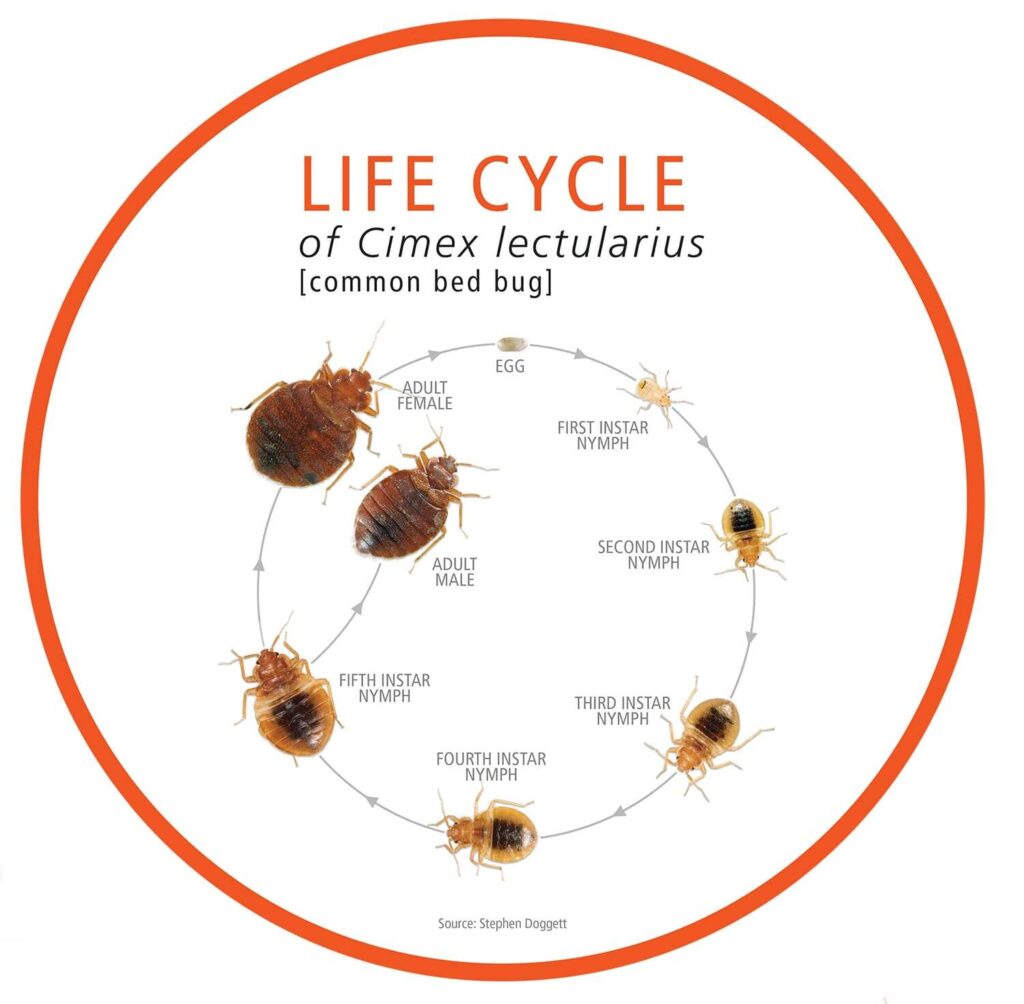Bedbugs, those elusive pests that invade our homes and disrupt our peace of mind, have a life cycle that plays a crucial role in their ability to infest and reproduce. Understanding the life cycle of bedbugs is essential for effective control and eradication. In this article, we will explore the life cycle of bedbugs and how heat treatment disrupts each stage, providing valuable insights into the efficacy of this method.
The Life Cycle of Bedbugs:
Bedbugs undergo a process called incomplete metamorphosis, which consists of three main stages: eggs, nymphs, and adults. Let’s delve into each stage and understand their significance in bedbug infestations.
- Eggs: The bedbug life cycle begins with eggs. After a blood meal, female bedbugs lay tiny, white eggs, usually in clusters or individually, in hidden locations close to their host. These eggs are difficult to spot, measuring about 1 mm in size, and are often nestled in cracks, crevices, or fabric seams. A single female bedbug can lay hundreds of eggs in her lifetime.
- Nymphs: After an incubation period of approximately one to two weeks, the eggs hatch into nymphs. Nymphs resemble smaller versions of adult bedbugs but are translucent or light-colored initially. They require regular blood meals to grow and molt through five nymphal stages, known as instars. Each nymphal stage involves a molt, where the nymph sheds its exoskeleton to accommodate its growth. Nymphs can feed on humans or animals and become engorged with blood before progressing to the next instar.
- Adults: Once the fifth nymphal stage is complete, the bedbug reaches adulthood. Adult bedbugs are about the size of an apple seed, reddish-brown in color, and have a flat, oval-shaped body. They are capable of reproducing and continue to feed on blood to sustain themselves. The adult lifespan can range from several months to over a year, depending on environmental conditions and availability of hosts.
How Heat Treatment Disrupts the Bedbug Life Cycle:
Heat treatment capitalizes on the vulnerabilities of each life stage of bedbugs, effectively disrupting their life cycle. Here’s how heat treatment targets and eliminates bedbugs at each stage:
- Eggs: Bedbug eggs are resilient and often resistant to traditional insecticides. However, heat treatment raises the temperature in the infested area to lethal levels for bedbug eggs, effectively preventing them from hatching. The sustained high temperatures during heat treatment destroy the eggs, ensuring that no new bedbugs emerge from them.
- Nymphs: Nymphs are particularly vulnerable to heat due to their delicate exoskeletons. The exposure to high temperatures during heat treatment disrupts their physiological processes and causes dehydration, ultimately leading to their demise. By targeting nymphs at all instars, heat treatment ensures comprehensive eradication of these developing bedbugs.
- Adults: Adult bedbugs are also susceptible to heat treatment. The sustained exposure to elevated temperatures disrupts their vital bodily functions, causing severe dehydration and eventual death. Heat treatment penetrates into cracks, crevices, and other hiding spots, ensuring that adult bedbugs are effectively eliminated, even in the most elusive areas.
Conclusion:
Understanding the life cycle of bedbugs is crucial for successful control and eradication. Heat treatment offers an effective solution by targeting each life stage of bedbugs. By subjecting them to sustained high temperatures, heat treatment disrupts the life cycle by preventing egg hatching, dehydrating nymphs, and causing mortality in adult bedbugs. This comprehensive approach ensures thorough eradication of bedbug infestations.
It is important to note that heat treatment for bedbugs is best conducted by professional pest control companies equipped with specialized equipment and expertise. Their knowledge of temperature monitoring and proper application techniques maximizes the effectiveness and safety of heat treatment. With a better understanding of the bedbug life cycle and the benefits of heat treatment, you can take proactive steps to eliminate these pests and restore peace and comfort to your home.








